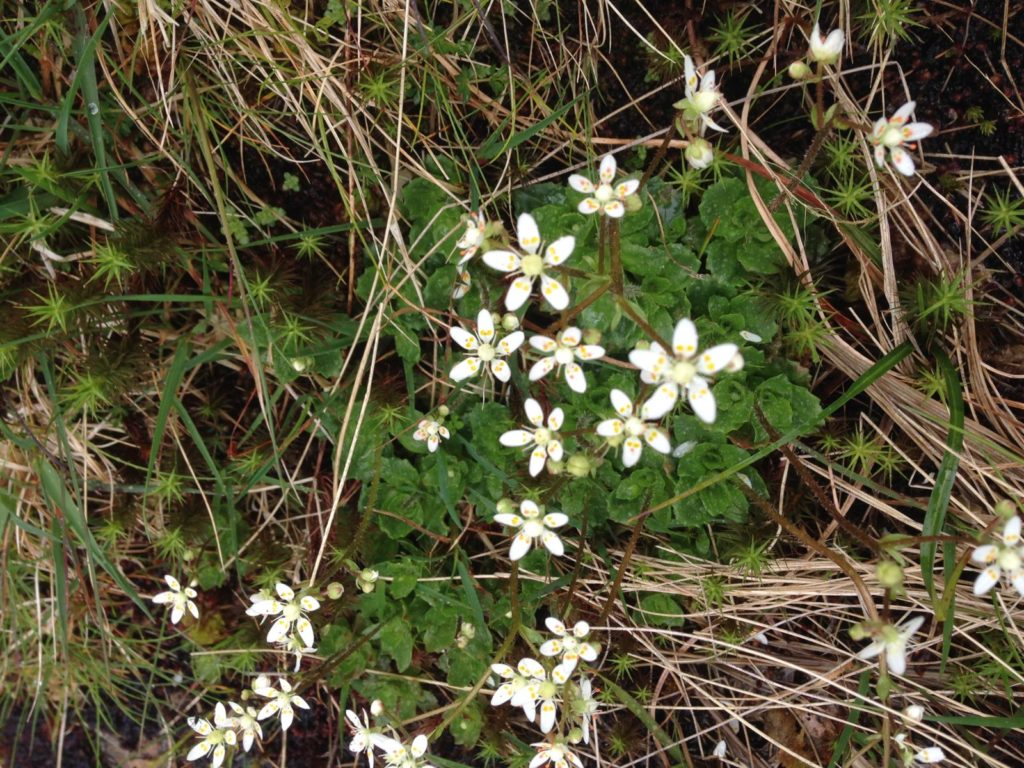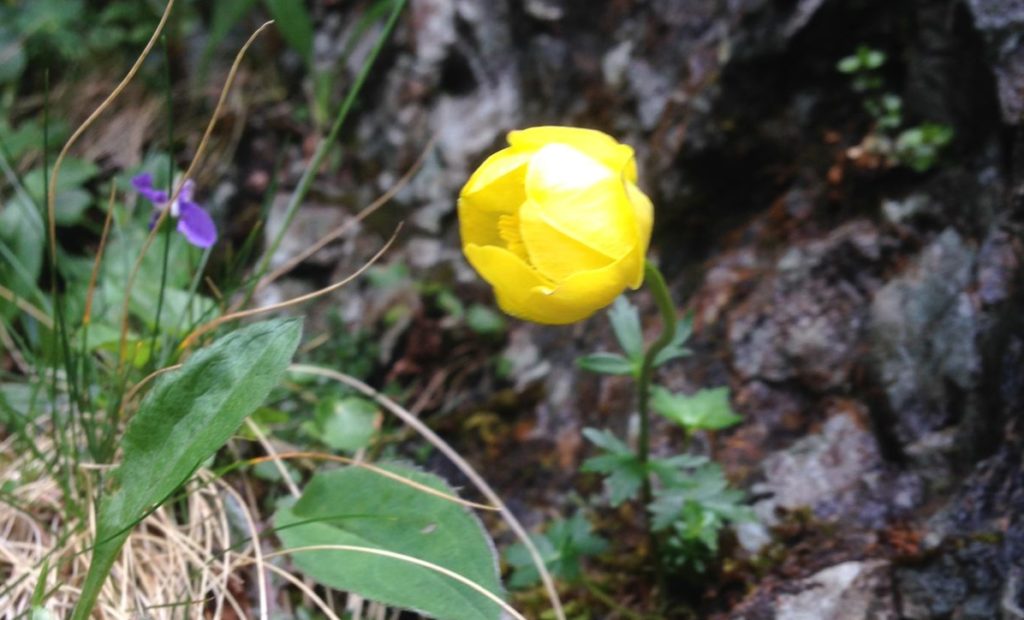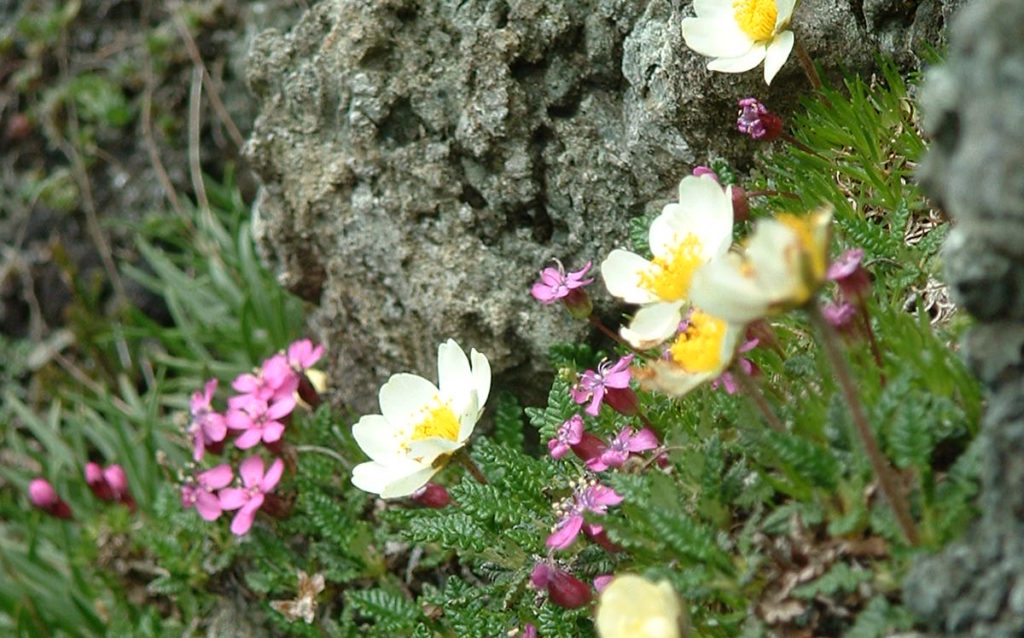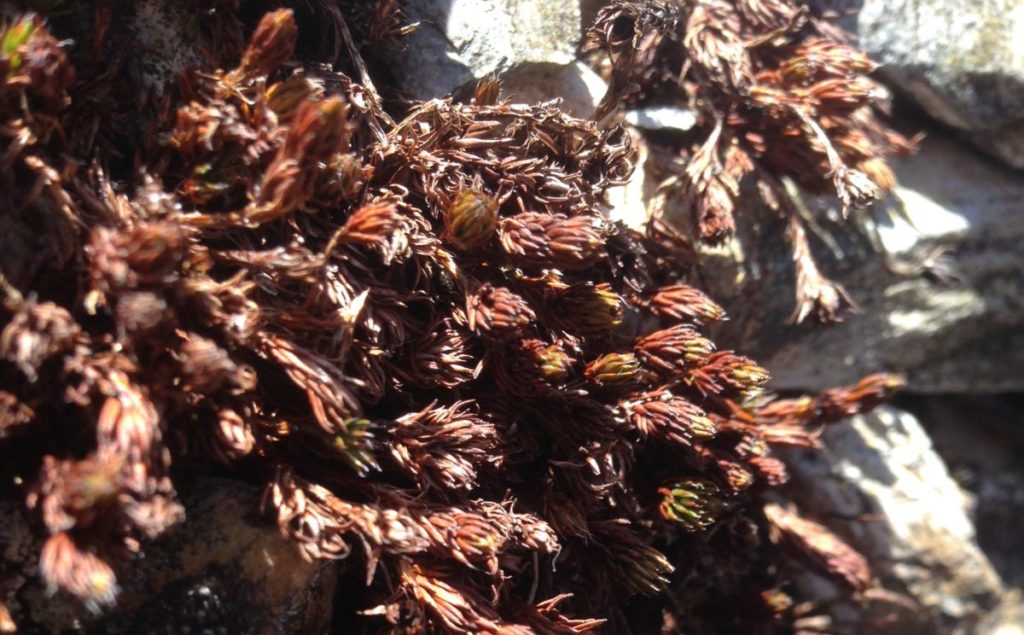There are several remarkable plants in Cwm Idwal, and most of the rarest plants belong to the Arctic-alpine taxon.
As is clear from the name ‘Arctic-alpine’, these plants have settled in very cold climates as found in the Arctic, the high mountains of the Alps, and Cwm Idwal.
Areas within Cwm Idwal are an ideal habitat for some of these plants, that have adapted perfectly for living in such a place. Among the attributes of Arctic-alpine plants are that these flowering plants grow in low mats or ‘cushions’and they have a short flowering season, which protects them from the extreme elements found in these areas. These plants are usually found growing on high, north east facing ledges, usually above 600m.
One of the first Arctic-alpine plants to flower in Cwm Idwal is the Purple Saxifrage, or the Opposite-leaved Saxifrage, or to give its Latin name, Saxifraga oppositifolia.
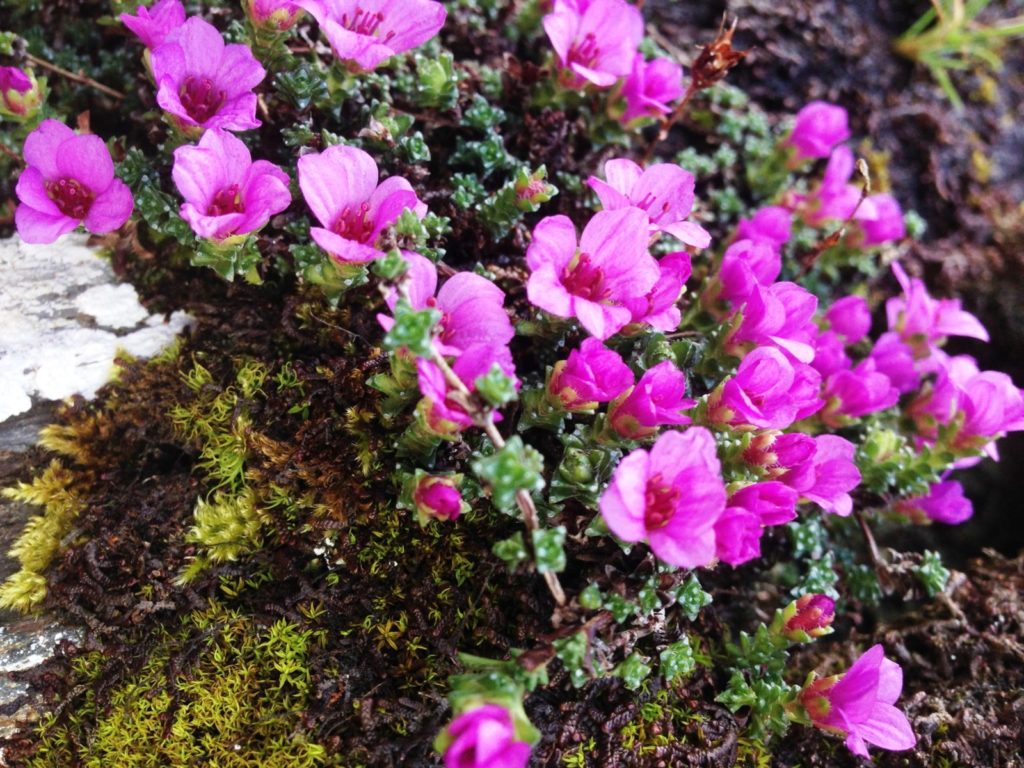
The Purple Saxifrage usually flowers from around mid-February through April, but the flowering season changes dependent on the winter weather we have in Cwm Idwal. There is rarely an opportunity to see the Purple Saxifrage flowering after Easter.
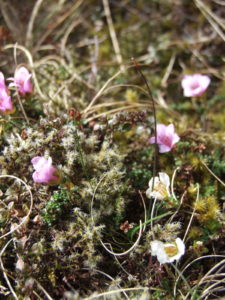 Is the name ‘Purple Saxifrage’ appropriate for this type of Saxifrage we have in Cwm Idwal? There are also white and pink flowers on the ‘purple’ Saxifrage in Cwm Idwal. A picture of the Purple Saxifrage with a white flower can be seen on the left.
Is the name ‘Purple Saxifrage’ appropriate for this type of Saxifrage we have in Cwm Idwal? There are also white and pink flowers on the ‘purple’ Saxifrage in Cwm Idwal. A picture of the Purple Saxifrage with a white flower can be seen on the left.
In Norway the Purple Saxifrage is known as rødsildre, or the Red Saxifrage, as redder flowers are found there, but it is the same species of plant as we have in Cwm Idwal. The colour of the flowers is defined by the gene pool of the plants that grow in that habitat in each particular location. The white flower could be the result of a limitation in the genetic pool found in Cwm Idwal.
Opposite-leaved Saxifrage is another name for this flower. An effective way of identifying it is by studying the leaf structure. The most apparent feature after the flowers is the 2-6mm leaves, which grow opposite each other in 4 rows, so the name Opposite-leaved Saxifrage is very appropriate. The tips of the leaves also have white spots, that are a concentration of calcium.
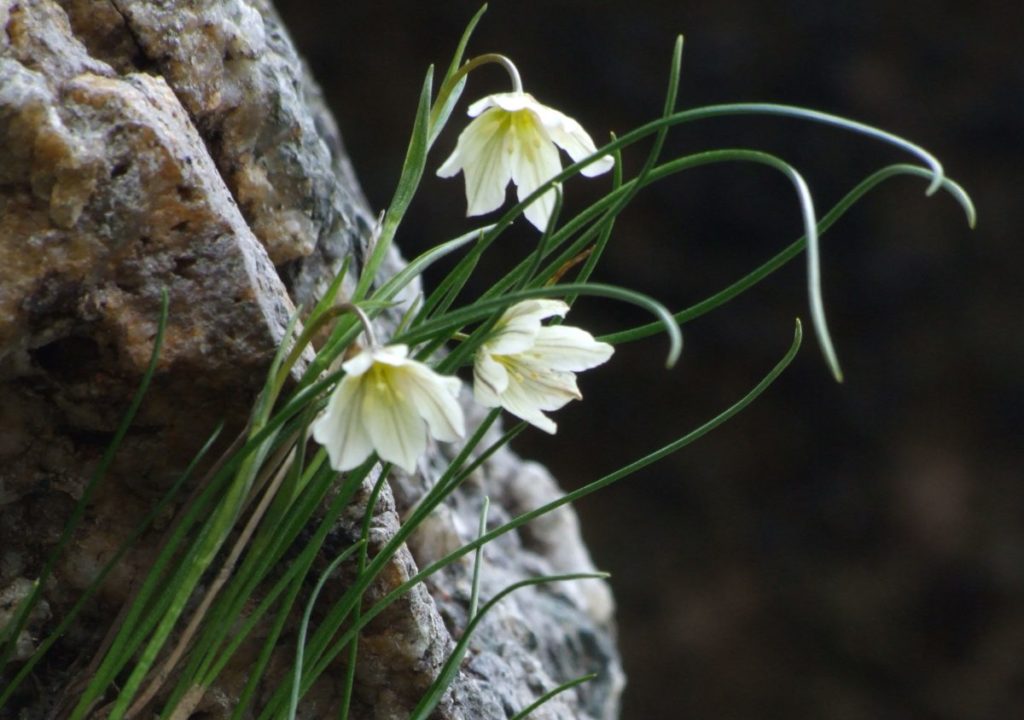
One of the most famous Arctic-Alpine plants that grows in Cwm Idwal is the Snowdon Lily, that grows on the higher cliffs.
